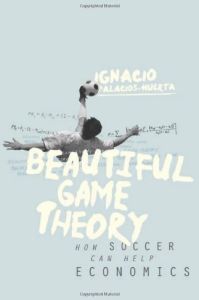Acesse a sua conta getAbstract para obter o resumo!

Acesse a sua conta getAbstract para obter o resumo!
Ignacio Palacios-Huerta
Beautiful Game Theory
How Soccer Can Help Economics
Princeton UP, 2014
Sobre o que é?
Soccer is a perfect aide for understanding economics; game theory offers an unorthodox look at “the beautiful game.”
Recommendation
Theories about economics and human behavior are notoriously difficult to test and analyze in a real-world setting. According to economist Ignacio Palacios-Huerta, soccer provides a useful laboratory and ample data for explaining economics. He argues that “the beautiful game” has a number of valuable characteristics that make it perfect for analyzing elements of human behavior, game theory and the efficient market hypothesis, and he extracts a number of pioneering and remarkable results from his research. While this is very much an economics text that uses soccer as its springboard, it offers plenty of sports anecdotes and trivia to broaden its appeal to those with little interest in deciphering technical economic texts. getAbstract believes this extended metaphor, with its unlikely fusion of subjects, will intrigue sports fans and economists alike.
Summary
About the Author
Ignacio Palacios-Huerta is a professor at the London School of Economics.






















Comment on this summary
The analysis of the penalties seem to be at the aggregate level, not analysing the individual preferences and succes probabilities.
I think the book could be a rich source to teachers of economics showing the aplicability of economic reasoning to every day life situations.